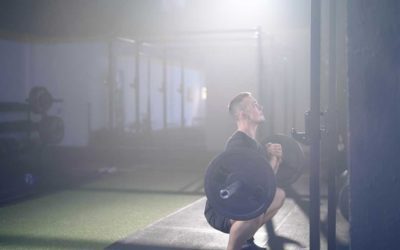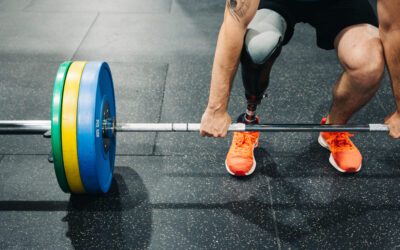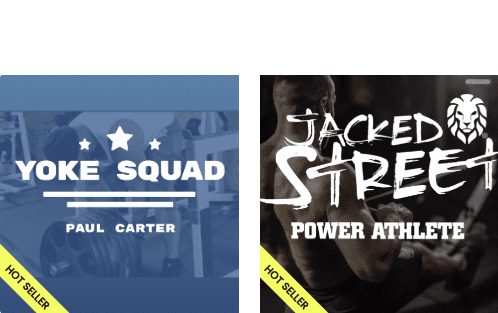Basic Blood Sugar Management for Those Hefty Holiday Meals

What exactly is the relationship between insulin and blood sugar? What are those wearable patches you’ve been seeing and why are they popping up on athletes of all sports these days?
If you’re not a diabetic or living with someone who is, you might have missed the exposure to blood glucose management. But as a human with a body, especially an athlete, these are things you should actually know. Managing your BG isn’t just for people with diabetes.
Take this article for a spin to get a primer on understanding your body’s response to food during the Wild West of holiday eating.

Change the Way You Train
It’s Not the Turkey Making You Sleepy.
Ah, the Thanksgiving buzzword: tryptophan. How many times have you heard it — “all that turkey made me tired!”
Yes, tryptophan can make you sleepy if you consume a lot of it, as it’s a precursor to melatonin, but the amount of tryptophan in turkey is no more than other meats. Have you ever eaten a turkey leg at the fair, or a turkey burger at a restaurant and needed to pass out right afterwards? Nah.
So what’s actually going on? Why does everyone get cozy on the couch and start snoring through the football game or the Macy’s Thanksgiving Day Parade?
In actuality, it’s the huge load of heavy fats, sugar, and carbs that make you feel sleepy after Thanksgiving dinner or Friendsgiving lunch. Think of the comfort foods served at most American holiday meals:
- Bread rolls
- Stuffing
- Mashed potatoes & gravy
- Casseroles
- Pies & sweet treats
With that combination of carbs and fats, it’s no wonder the post-meal nap has become an acceptable part of the tradition. Throw a little alcohol in there and grandpa will be hitting the recliner right after the pumpkin pie.
Note From The Author: Until I started dating an athlete with Type 1 diabetes (they exist!), I hadn’t really grasped the impact of BG (blood glucose) fluctuations on your daily life. Even if you’re not diabetic, your BG fluctuates within a normal range every day.
Your metabolic health affects your hormones and vice versa, which affect everything from your energy levels to your mood, motivation, and emotional state. It’s incredibly valuable to know just how your body handles food once you’ve swallowed it.
ELI5 (Explain Like I’m 5): How Do Blood Sugar & Insulin Work?
Once you eat that big meal, the carbs (bread, potatoes, starches, etc) break down into glucose, a sugar that acts as your body’s go-to source of energy. The glucose in your bloodstream signals to your pancreas to start pumping out insulin.
Insulin is a growth hormone produced by your pancreas that shuttles glucose into your body’s cells where it can actually be used as energy. Without insulin, glucose just hangs around in your bloodstream, making you feel like sh*t. If your pancreas or insulin pump doesn’t respond, it can lead to hyperglycemia.
For people with a working pancreas, eating high carb foods means sending that thing into overdrive. After tons of repeated overdrive without adequately using those carbs for energy (like a carb-heavy, sedentary lifestyle), your pancreas basically gets exhausted. This can lead to insulin resistance, a precursor to Type 2 diabetes.
- Type 1 diabetes: the pancreas breaks for seemingly no reason, usually at a young age (my fiancé was 8), and the athlete needs supplementary insulin for life.
- Type 2 diabetes: often a result of being overweight with a sedentary lifestyle and high-carb diet; can be reversed by lifestyle change.
For diabetics, it’s a constant battle for homeostasis — a balance between eating food, raising your blood sugar, using the right amount of insulin, and expending that energy to stay in a normal BG range.
The important thing to grasp here is that glucose is an energy source. Meaning: when you eat it, you need to use it.
A Note on Fats
We mentioned fats above, but what do they have to do with the metabolic process? Like protein, relatively little fat can be used for immediate energy, so it doesn’t spike your blood sugar as readily. BUT combining fats with carbohydrates at meals slows down the rate of absorption for the food. This can affect the insulin timing/dose for diabetics.
For non-diabetics, it generally means a couple hours of feeling sluggish while digesting Thanksgiving din. But guess what? It doesn’t have to be that way!
The Metabolic Cycle

Symptoms of Hyperglycemia
(too much sugar in your blood)
- Drowsiness (hello, post-Thanksgiving nap!)
- Irritability
- Extreme thirst
- Frequent urge to pee
- Dry mouth & sweet-smelling breath
- Stomach cramps
- Feeling like your blood has turned to sludge*
Symptoms of Hypoglycemia
(not enough sugar in your blood)
- Headaches
- Hunger
- Dizziness
- Sweating & shaking
- Blurred vision
- Extreme fatigue & paleness
- Mood swings
*Added by actual diabetics.
Fun(?) Fact: Before modern medicine, diabetes went by a number of dark names like “sugar sickness”, “wasting-thirst” and “honey urine” (because your pee tastes sweet 🤢).
Small Changes Help Manage Your BG at Meals
If you’re an athlete and already have an eye on your nutrition, it doesn’t take a huge, dramatic change to your holiday meals to blunt your body’s insulin response. A few key adjustments will make it so you don’t feel gross and immediately want to pass out after eating.
1. Load Your Meat & Veggies First
Portion control is everything. Focusing on the meat and vegetables at the meal will make you feel fuller, so you can avoid overeating the starchy stuff.
2. Smaller Portions of Bread, Sweets & Starches
Again, portion control. Try cutting your portions of high-carb/high-fat foods in half, or skipping one in favor of another instead of having both.
3. Pick One: Sugar or Alcohol
Alcohol can do crazy things to your BG, especially when combined with food. I still have trouble figuring it out based on the research and reports from diabetics I know. It seems the basic idea is alcohol by itself tanks your blood sugar, but alcohol and sugar combined jacks it up. Alcohol + sugar + fat = ??? Logic would say it’s not a great combination.
To keep things simple: if you’re gonna have both, limit your consumption of each.
4. Stay Hydrated
Water is life. Turns out having a small bowl of clear soup before a meal or drinking some hot green tea is an easy trick to dodging a massive insulin response (if only because it makes it harder to over-eat).
5. Take a Walk After the Meal!
This is probably the most effective way to keep your blood sugar from skyrocketing after eating a carb-heavy meal. By using the biggest muscle groups in your body (your posterior chain) to take a ten minute walk, you’ll be doing what you’re supposed to do with all that glucose — using it.
If you do one thing on this list, let it be this one. Take a walk around the block. Bring the dog and do 10 air squats every time he takes a pee. Grab Nancy & Greg’s new baby and take it for a stroller walk. Whatever it takes, make the post-meal walk a priority.
A Note On Holiday Traditions
Are you the one in charge of making green bean casserole just like grandma made it? Does it actually need those fried onions on top, or can you claim the store was out and make a slightly healthier version with olive oil and lemon juice instead?
In her book, Salt Fat Acid Heat, professional chef, Samin Nosrat, notes that the blandness of traditional American comfort food makes it easier to eat a ton of it. What’s usually missing is the mouth-watering tangy/sour zing of acid, which is only really found in the cranberry sauce.
“What acidity does in our cooking is it provides a contrast. Contrasts are what we find to be so delightful and give us so much pleasure when we’re eating. Everything on the Thanksgiving table tends toward the salty, the starchy, or the rich, or sometimes even the bland. Often, the only acidic thing on the entire table is cranberry sauce, which is why most people just keep spooning cranberry sauce onto their plates.
Even in a lot of the most traditional dishes, there are simple ways to work a little bit of acid in. For example, in Thanksgiving stuffing, which is probably my very favorite part of the whole meal, I often will make a little bit of ground-up sausage meat with some white wine in there. I’ll soak prunes or any dried fruit, which is a little bit acidic, in white wine, which adds a little bomb of acidity. I’ll use sourdough bread, which is naturally sour.
I’ll work crème fraîche or sour cream instead of cream and butter into mashed potatoes. When I’m making the gravy, I might add a fresh little splash of white wine. Pickled shallots on top of green beans.”
We’re not here to take away your usual holiday traditions, but maybe you can come up with some creative ways to make them healthier. If you wanna go HAM on some sweet potato casserole this year, have at it. But if you hate the way you feel afterwards, consider switching up your recipes… or at least skipping the bread rolls or that second glass of wine to curb the metabolic effects.
If there’s one point to drive home here, it’s this:
Sugar and carbs are not the enemy. They’re tools.
If you want a deeper understanding of exactly how your body responds to food, ask for one of the new CGM (continuous glucose monitor) devices for Christmas. (I am.)
Oh, and take that post-meal walk!
Find Your Perfect Training Plan
Sometimes all you need to reach your destination on your fitness journey is an expert guide. We've got you covered. Browse from thousands of programs for any goal and every type of athlete.
Try any programming subscription free for 7 days!
Want Training Tips, Exercise Guides & Knowledge Bombs Sent to Your Inbox?
Sign up for the FitNerd newsletter from TrainHeroic
Related articles
How To Zercher Squat: One Exercise To Rule Them All
I have a secret weapon exercise that will get us really close; it has a lot of bang for its buck. It builds massive quads, big glutes, a wide back, and some awesome biceps. Exactly what every athlete needs.
What Does Paralympic Strength Training Look Like?
Paralympians undergo rigorous training when preparing for the Paralympic Games. While the Paralympics only last about two weeks, getting ready takes place all year, as these athletes are among the most dedicated in the world. Here’s how people with disabilities...
Your Guide to Passive Recovery Strategies
What is Passive Recovery? I don’t think that there exists a complete guide for athletes that tackles the underrated topic of “Recovery-Regeneration” strategies. I plan to disclose a majority of the scientific and practical information that I know of on this topic and...

Join the community
Sign up for the latest training news and updates from TrainHeroic

About TrainHeroic
Made with love, sweat, protein isolate and hard work in Denver, CO
© 2023 TrainHeroic, Inc. All rights reserved.






